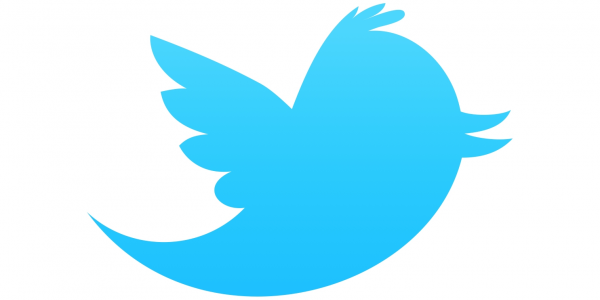Forging ties over followers

In the wake of the recent events surrounding Bolton Wanderers’ Fabrice Muamba, two things have become apparent about football fans in England. Firstly, the outpouring of compassion, support and solidarity has been remarkable. Not since the tragic death of Gary Speed has the footballing world rallied together with such unity.
This brings about the second point. One wonders of the true altruistic intent of all this back-patting, self-congratulatory hysteria. It is difficult to place an argument against applauding such basic human decency when it manifests itself in such dramatic circumstances. However, should people really be impressed with supporters for doing simply what they ought to do?
The hats-off reaction underpins an inherent concern that perhaps the footballing world’s reaction to Muamba’s cardiac arrest may not have gone quite as well as it did. Gary Lineker’s effusive praise of supporters is probably more indicative of underlying problems in football, rather than a simple commentary on what should be the only appropriate response.
In the week that apparently ‘brought out the best in football’, social networks have, as always, provided an amphitheatre for relative non-committals to offer their collective reaction to the unfortunate midfielder. Twitter has become an incredibly powerful tool for generating a unified voice, representative of a majority. For days #pray4muamba was trending on the microblogging site, while scores of famous people tweeted their missives of support for Muamba.
Yet Twitter also provides an unregulated platform for people to offer their unsavoury opinions. Liam Stacey, a 21-year-old Swansea University student, was jailed for 56 days for inciting racial hatred through provocative tweets to the player that caused widespread outrage and revulsion.
Stacey’s comments were the latest in what has been a recent deluge of racial outbursts from a few individuals. Former footballer Stan Collymore, a prominent anti-racism campaigner, is working to tackle this issue. He recently encouraged users to alert the police to any racist tweets they come across, adding that “they will act and listen”.
Non-committal coalescence
What, then, has this got to do with marketing? The point is that Twitter is a useful facility. It can create a snowball-style buzz, reaching millions within minutes. In a brilliant article in The New Yorker, the author and journalist Malcolm Gladwell recently pointed to the power of Twitter in Moldova, when tens of thousands of protestors took to the streets to vocalise their disdain for the country’s Communist government. It was dubbed the Twitter Revolution because of the means by which many protestors were brought together.
As Gladwell points out, however, this was a misguided interpretation. Twitter, in fact, acted as an arena for ‘hacktivists’ to supposedly raise awareness on the issue in Moldova. The site itself had little internal significance; few Twitter accounts exist in the country. No one seemed to take account of the fact that the majority of tweets were in English, not Moldovan, as one might expect.
In a pre-Twitter age, protest and sit-ins were organised by people whose relationship to one another was more than that of a tenuous online link. Social media relationships are often built around weak ties – this is particularly true of Twitter. Facebook users will make ‘friends’ with people they know in real life, or have a least met by passing chance. The ability to ‘follow’ people, especially celebrities, on Twitter means you forge vague connections with people you have, and probably will never, meet.
This is not necessarily a bad thing. Twitter can be a great source of ideas and inspiration. It offers the opinions of great thinkers, writers and authors in palatable, 140-character epistles. According to Gladwell, “the internet lets us exploit these kinds of distant connections with marvellous efficiency”. It seamlessly matches buyers and sellers, and there is an argument to be had that selling a product involves weak or flexible ties no matter what the medium to deliver the message is.
The recent campaign to oust military leader Josef Kony from Uganda was the perfect exhibition for the stir that social networking can cause. Millions had watched the Kony video within hours, and many more had tweeted their support of the campaign. Why had this been so effective? Because it didn’t ask too much of anyone. To go out, actively meet fellow campaigners and organise rallies requires a commitment not seen among the Twitter-community. To follow a celebrity requires a passing interest in what they have to say. The same level of commitment is required to support a good cause.
Strong ties; meaningful messages
Twitter's millions of users are an unknown face in an enormous ocean of anonymity, save for a few big names. That’s why people like Liam Stacey think they can get away with hate crime – who knows or cares who he is? Who will pick up on his messages?
I recently tweeted at the actor and comedian Peter Serafinowicz regarding the NHS reforms. He retweeted my tweet to his followers, meaning more than 614,000 people saw my name, face and message. As a result of that I received not a single ‘follow’ or direct communication from anyone. The point here is that for people to take notice of what you say on Twitter, they have to care who you are.
Which brings this back to using Twitter as a stage to market your business. It is more important to forge a few strong ties, rather than thousands of weak ones. This gives you an active rather than a passive audience. Messages can become lost on a Twitter stream, hidden beneath the 84 tweets Stephen Fry sends out every seven minutes. If you’re connected with the right people, however, it can be very powerful indeed. Take the time to find relevant listeners, tweet to them rather than the masses. And before you send out your messages, ask yourself: who is really listening?
